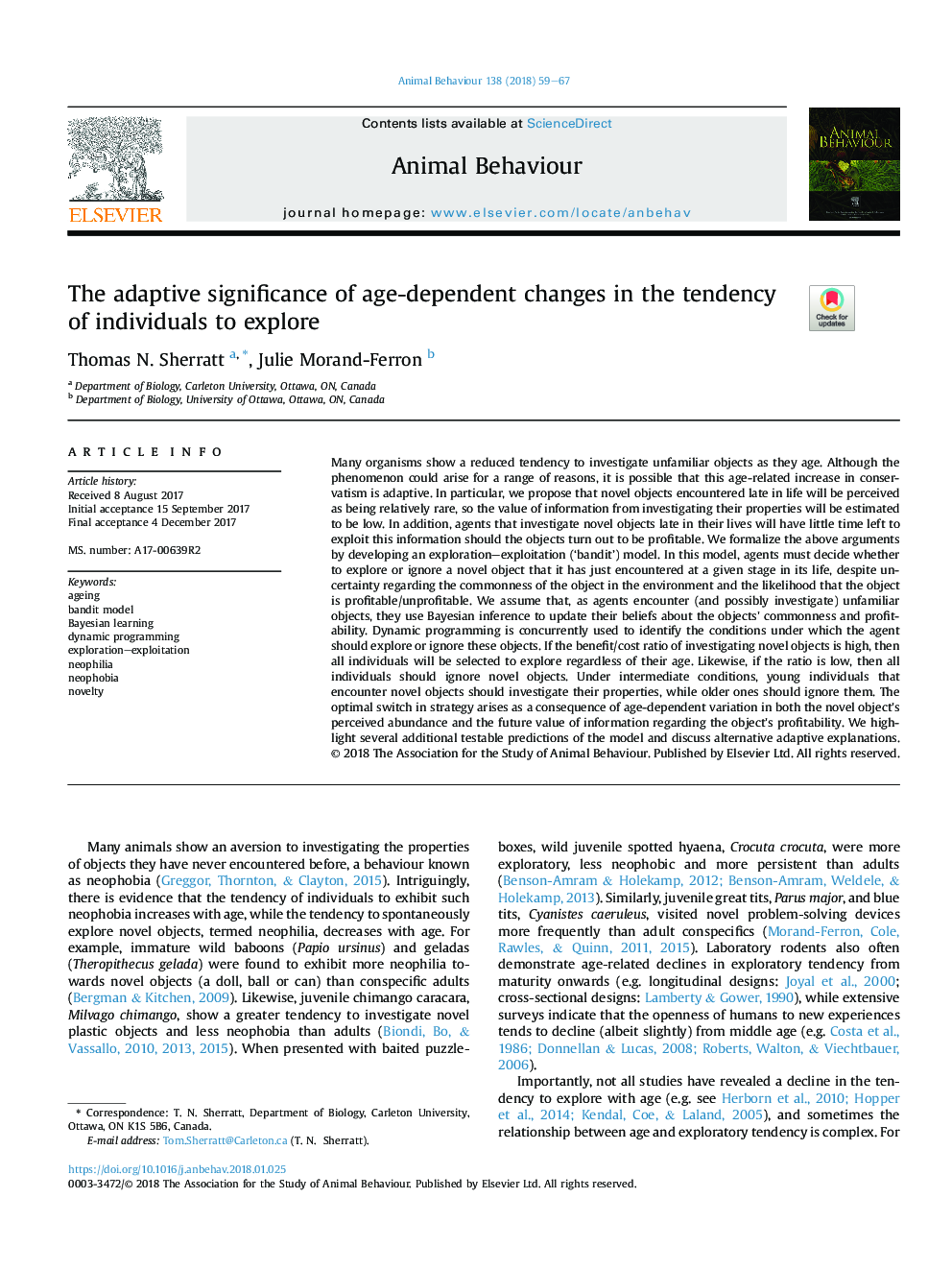| Article ID | Journal | Published Year | Pages | File Type |
|---|---|---|---|---|
| 8488589 | Animal Behaviour | 2018 | 9 Pages |
Abstract
Many organisms show a reduced tendency to investigate unfamiliar objects as they age. Although the phenomenon could arise for a range of reasons, it is possible that this age-related increase in conservatism is adaptive. In particular, we propose that novel objects encountered late in life will be perceived as being relatively rare, so the value of information from investigating their properties will be estimated to be low. In addition, agents that investigate novel objects late in their lives will have little time left to exploit this information should the objects turn out to be profitable. We formalize the above arguments by developing an exploration-exploitation ('bandit') model. In this model, agents must decide whether to explore or ignore a novel object that it has just encountered at a given stage in its life, despite uncertainty regarding the commonness of the object in the environment and the likelihood that the object is profitable/unprofitable. We assume that, as agents encounter (and possibly investigate) unfamiliar objects, they use Bayesian inference to update their beliefs about the objects' commonness and profitability. Dynamic programming is concurrently used to identify the conditions under which the agent should explore or ignore these objects. If the benefit/cost ratio of investigating novel objects is high, then all individuals will be selected to explore regardless of their age. Likewise, if the ratio is low, then all individuals should ignore novel objects. Under intermediate conditions, young individuals that encounter novel objects should investigate their properties, while older ones should ignore them. The optimal switch in strategy arises as a consequence of age-dependent variation in both the novel object's perceived abundance and the future value of information regarding the object's profitability. We highlight several additional testable predictions of the model and discuss alternative adaptive explanations.
Related Topics
Life Sciences
Agricultural and Biological Sciences
Animal Science and Zoology
Authors
Thomas N. Sherratt, Julie Morand-Ferron,
